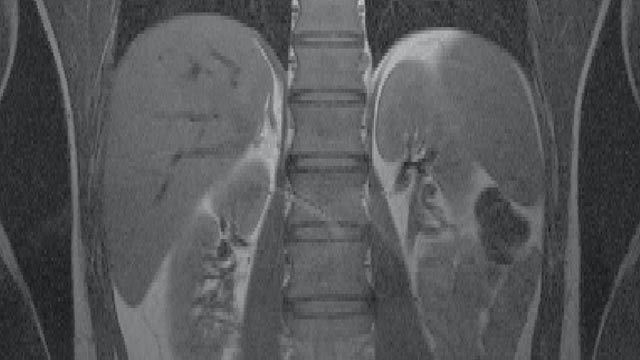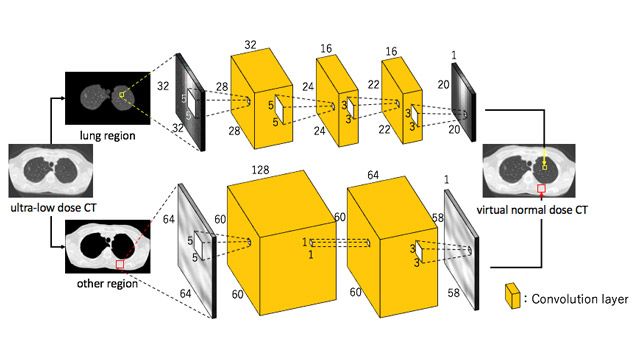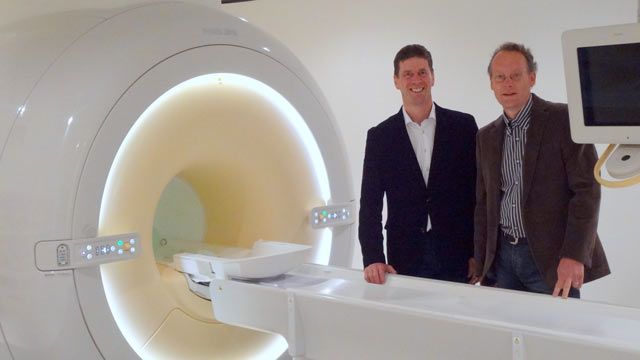MATLAB and Simulink let you design, develop, and test medical imaging algorithms and devices while complying with industry regulations and standards. You can validate MATLAB and Simulink products for medical devices to satisfy FDA/CE regulations and conform to standards such as IEC 62304 in the development process.
With MATLAB and Simulink, you can:
- Prototype and implement high-performance image formation and reconstruction techniques
- Create image processing algorithms for computer vision, radiomics, and computer-aided diagnosis
- Train and validate explainable artificial intelligence (AI) and deep learning models
- Deploy and share medical imaging applications in the cloud
- Design and simulate antennas, arrays, power systems, and control systems for medical imaging devices
“Simulink helps system architects and hardware designers communicate. It is like a shared language that enables us to exchange knowledge, ideas, and designs. Simulink and HDL Coder enable us to focus on developing our algorithms and refining our design via simulation, not on checking VHDL syntax and coding rules.”
Marcel van Bakel, Philips Healthcare
Streamline Image Formation and Analysis
MATLAB and Simulink enable rapid prototyping and implementation of advanced algorithms for image formation, reconstruction, and analysis. The products let you create high-quality medical images from raw data such as k-space (MRI), RF signals (ultrasound), and projection rays (CT). You can verify, validate, and deploy these algorithms in embedded hardware and cloud environments, making it possible to realize medical device certification workflows for deep learning, machine learning, and reconstruction algorithms. You can get to market faster with product enhancements while incorporating advanced designs and compliance into your algorithms.
Examples and How-To
Explore Products
Develop Advanced Medical Image Processing Algorithms
With the extensive image processing capabilities of MATLAB and Simulink, you can import, visualize, and analyze medical images in their native format such as 3D (MRI, CT), real-time (ultrasound, endoscopy), multimodal (PET, SPECT), or high resolution (digital pathology). The built-in interactive apps provide intuitive workflows for computer vision, radiomics, and computer-aided diagnosis tasks. For productization, the algorithms can be automatically translated into optimized, high-performance code for target hardware.
Create AI-Based Medical Imaging Applications
MATLAB and Simulink enable AI-based medical imaging applications such as image segmentation, classification, and object detection. You can work with common AI frameworks such as TensorFlow™ and PyTorch—and more importantly, integrate AI into the complete workflow for developing an imaging application. With Model-Based Design, you can incorporate verification and validation into the development process for FDA/CE regulatory compliance.
Explore Products
Deploy and Share Medical Imaging Applications in the Cloud
With MATLAB and Simulink, you can create cloud-based medical imaging applications for software-as-a-service (SaaS) and Healthcare IoT using public providers such as AWS®, Azure®, or NVIDIA® GPU cloud. You can create browser-based web apps to share applications with others for collaboration and external validation. Also, you can use the cloud to accelerate the performance of your imaging application in deep learning and other compute-intensive tasks.
Design Medical Imaging Devices
With MATLAB and Simulink, you can design medical imaging device parts and control systems using modeling and simulation. You can design multidomain components such as MRI coils, ultrasound transducer arrays, RF power systems, as well as control systems for motors, thermal management, and X-ray accelerator voltages. Also, you can test the correct operation of these components in a virtual environment before building expensive hardware prototypes.


Contact Us

Build Your Startup with MATLAB and Simulink
See how other startups use MATLAB.

Developing IEC 62304–Compliant Embedded Software for Medical Devices
Read white paper








